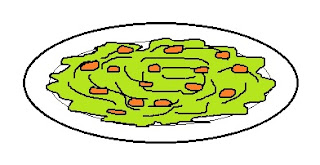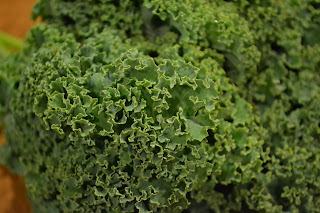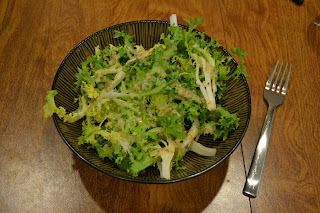I know I mentioned recently that all these weeks have been running together a bit, and that we're posting all of these photos and recipes after the fact. We get a
lot of vegetables from the CSA, and while we have managed to eat it all so far, sometimes it takes more than a week to get through a week's worth of vegetables.
And sometimes we just throw the contents of our entire fridge into one dish.
Right around week three in the CSA we began getting squash and zucchini. A
lot of squash (and zucchini). Well, between week three and week four, we found ourselves with several pounds of squash, as well as quite a few garlic scapes. (We still hadn't actually used the garlic scapes from week two yet, but they held up very well, and we got
more garlic scapes in week four.)
Side note: I am a huge fan of garlic in all forms, but before receiving them in my week two loot, I had never even heard of scapes. Garlic scapes are the curly flower stalks that grow up from the bulbs of some kinds of garlic. And they taste (surprise!) like garlic, but milder. They can be eaten just about any way that you would eat garlic, and some that you probably wouldn't, like raw, chopped, on a salad. Unless you'd eat garlic raw, on your salad, in which case I wonder about you.
 |
| The few. The curly. The scapes. |
So Brian and I were looking at the small mountain of squash in our kitchen, pondering how we were going to consume it all, and suddenly, without a word, Brian leaped into action. He threw some olive oil in a pan, and began chopping, dicing, and slicing like a madman.
The dish that emerged from the frenzy in the kitchen used just about all our remaining vegetables (that week, anyway, we're never low on veggies for long these days), and thanks especially to the shallots and scapes, it was ridiculously delicious. We consumed every last ounce.
It's surprisingly simple, and can easily handle, apparently, very large quantities of squash.
Sauteed Squash and Zucchini with Shallots and Garlic Scapes
Ingredients
Shallots, finely chopped
Summer squash and zucchini, sliced
Garlic scapes, cut into 1-inch segments
Olive oil
Salt and pepper to taste
Steps:
1. Heat olive oil in a large pan
2. Sautee shallots in oil
3. Once shallots are translucent, add garlic scapes and squash
4. Sautee until squash is soft, add salt and pepper to taste



















































